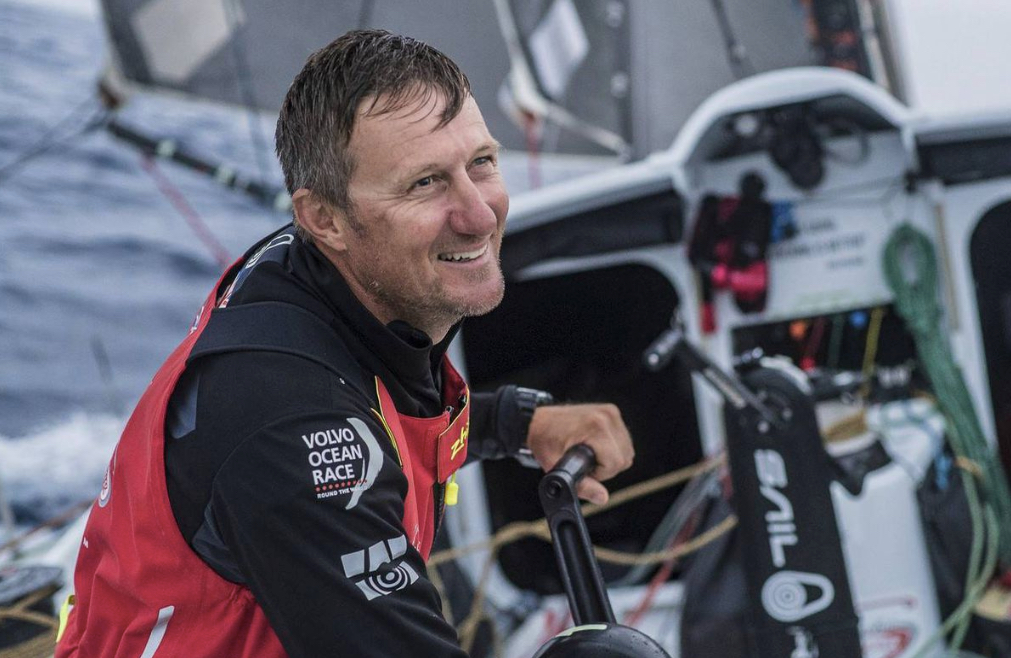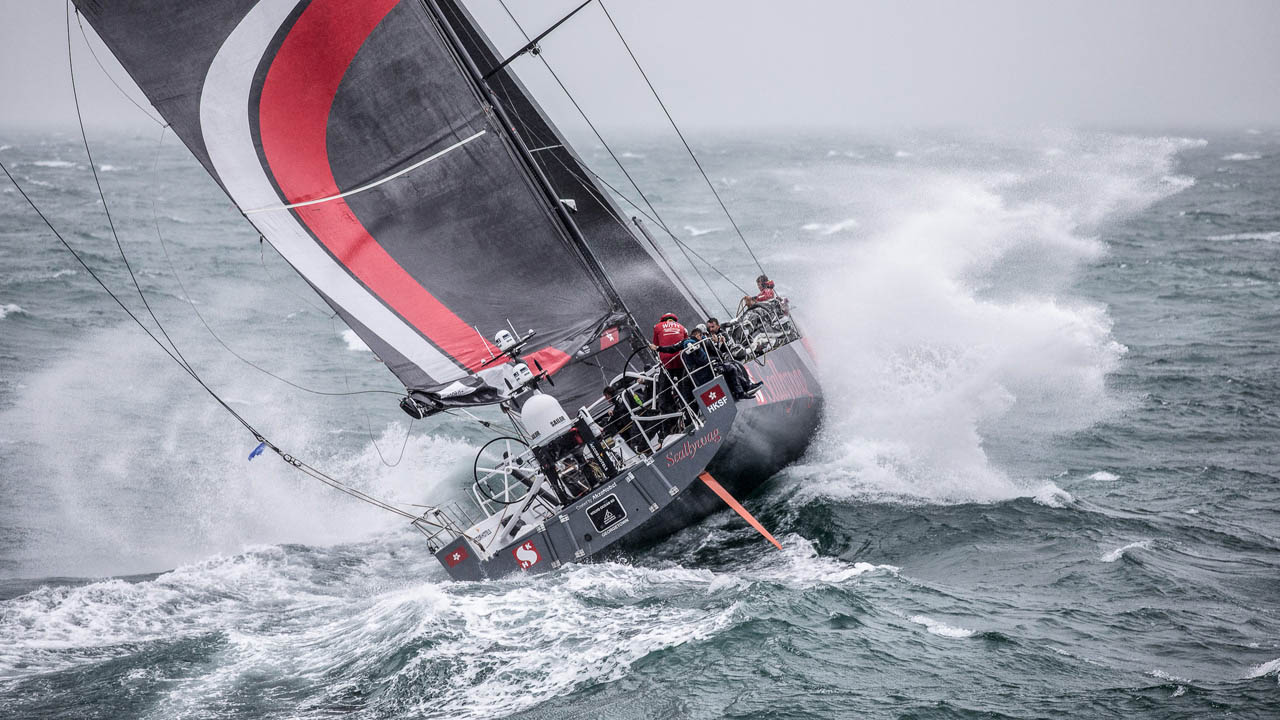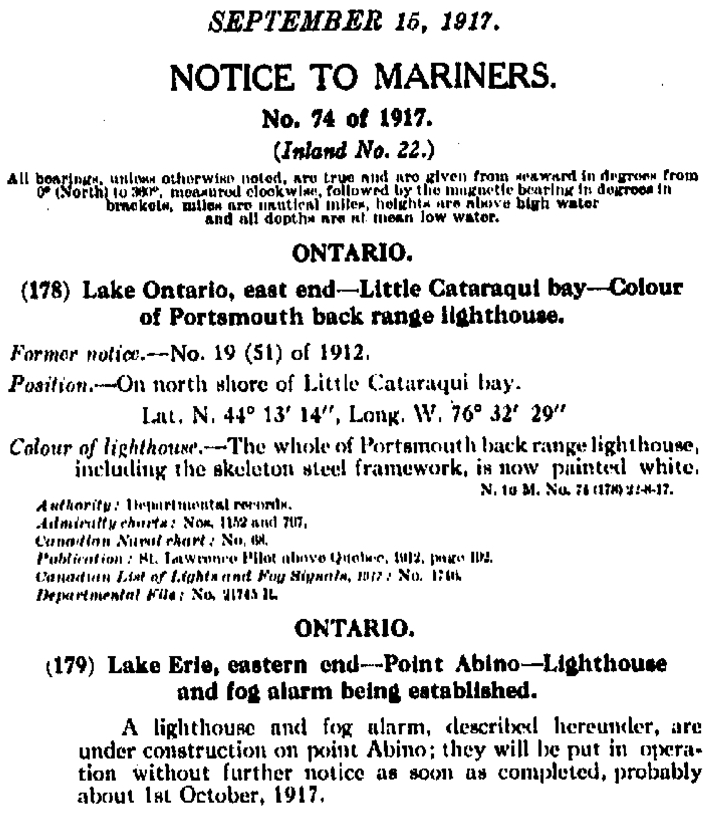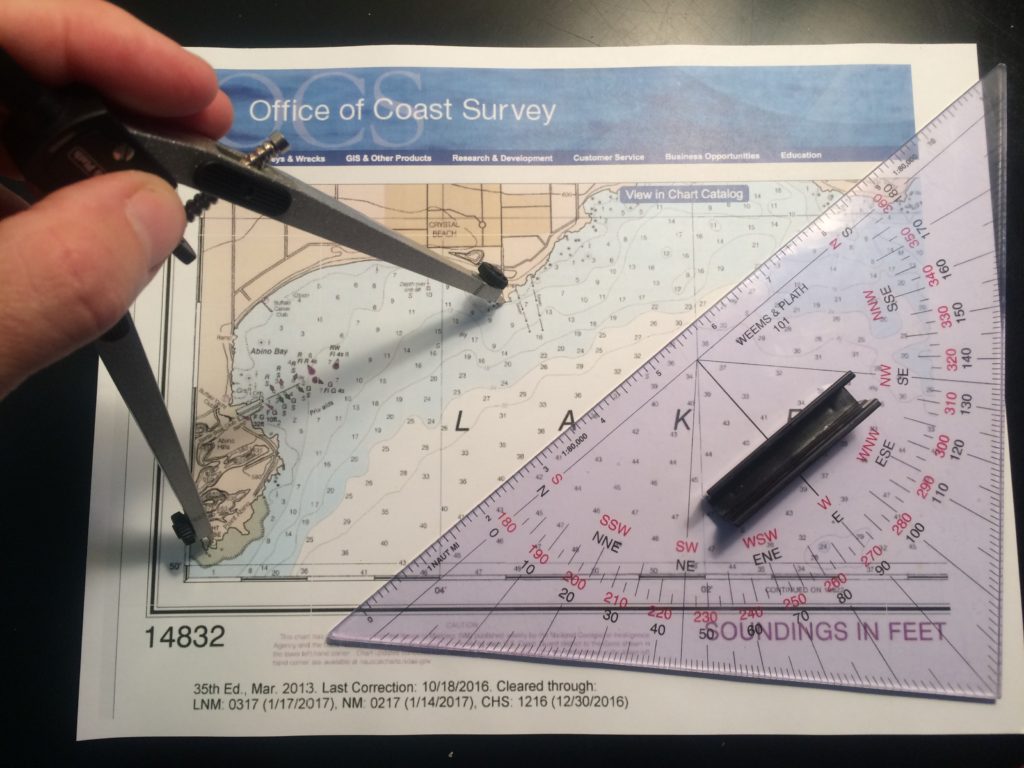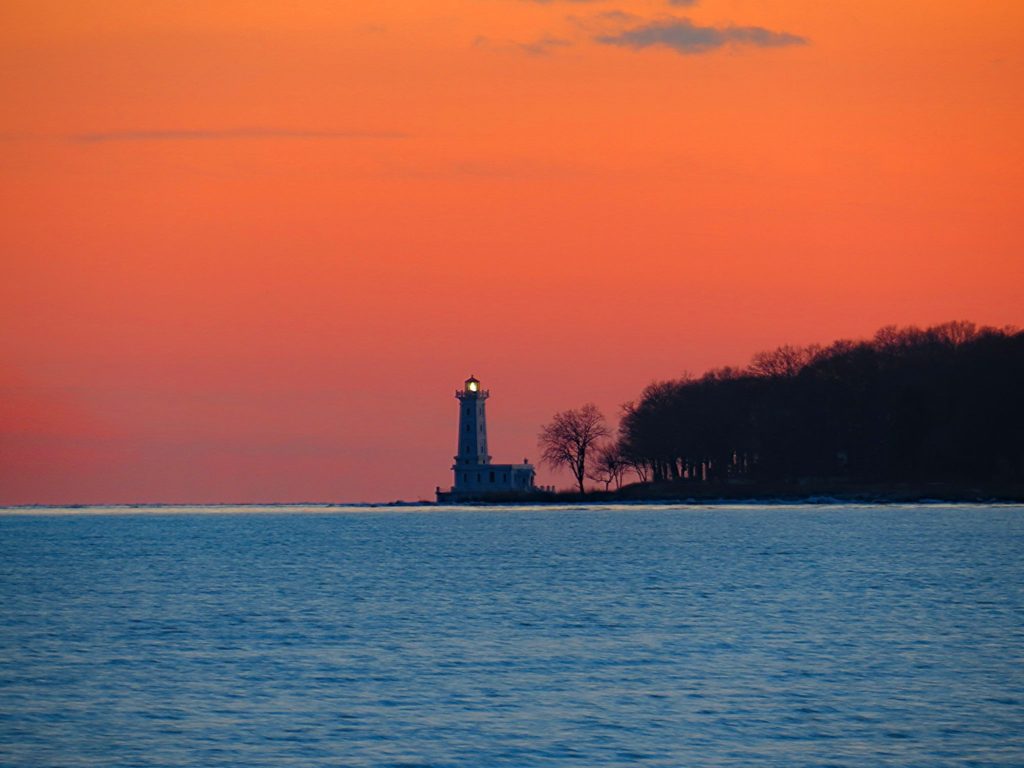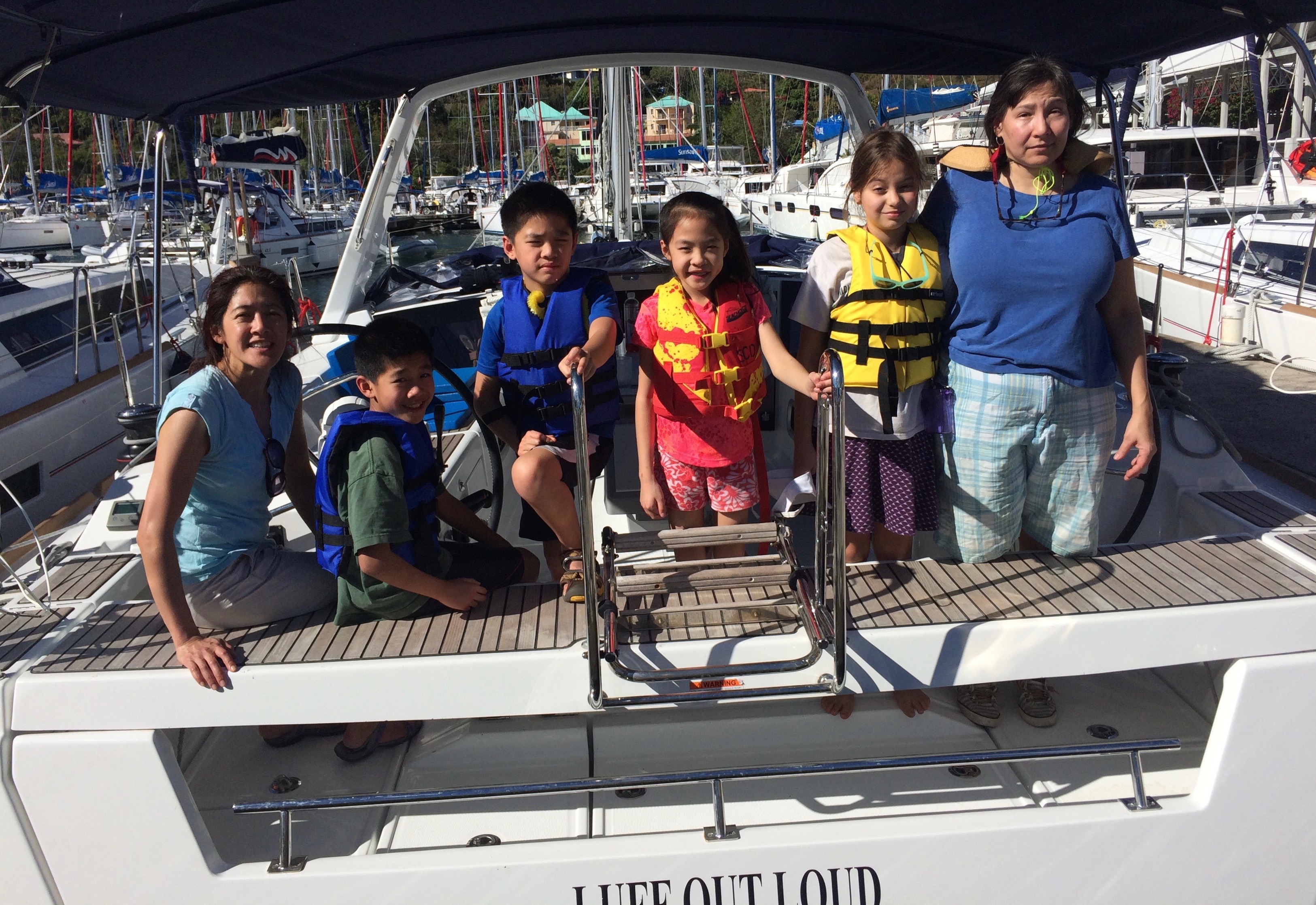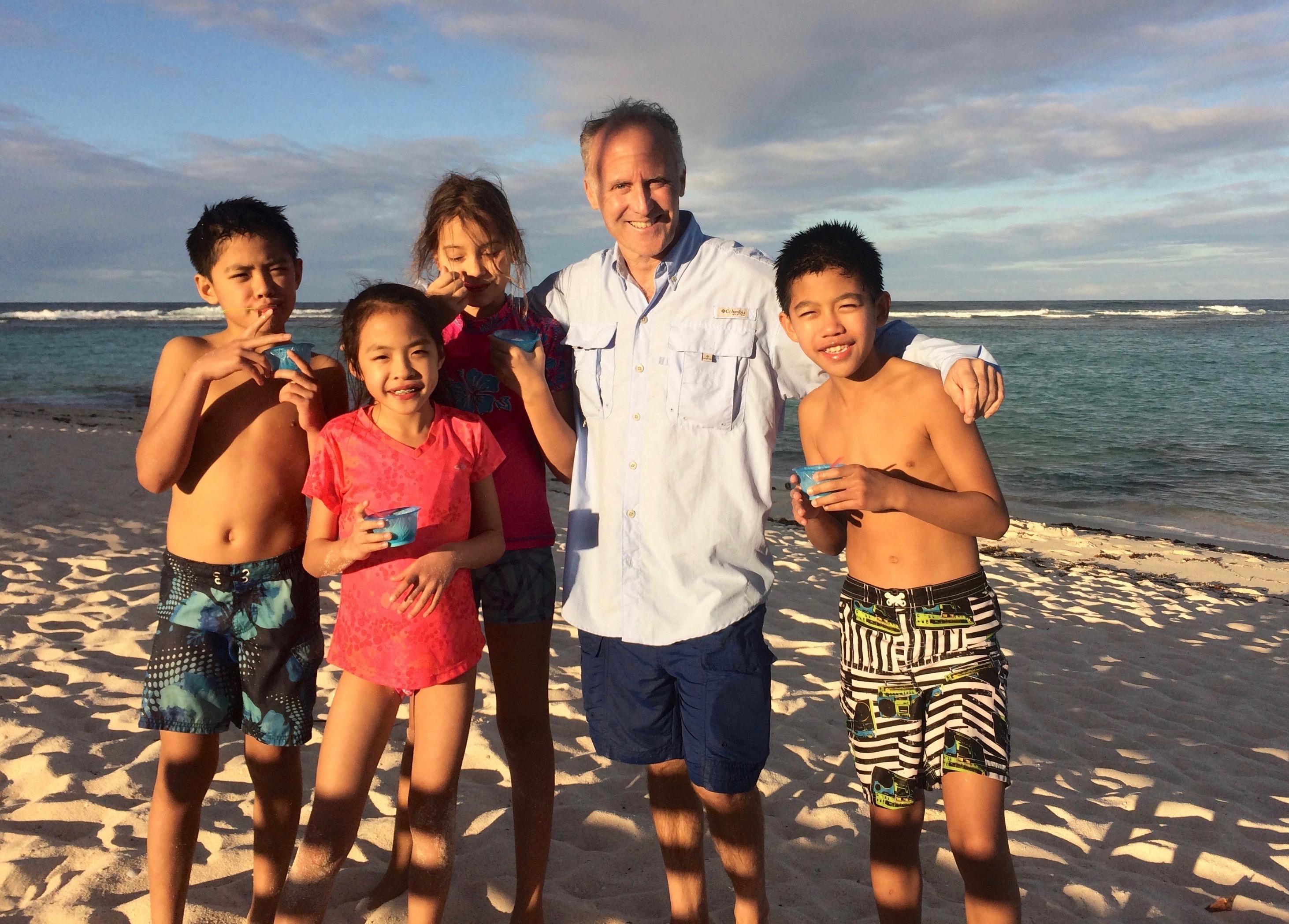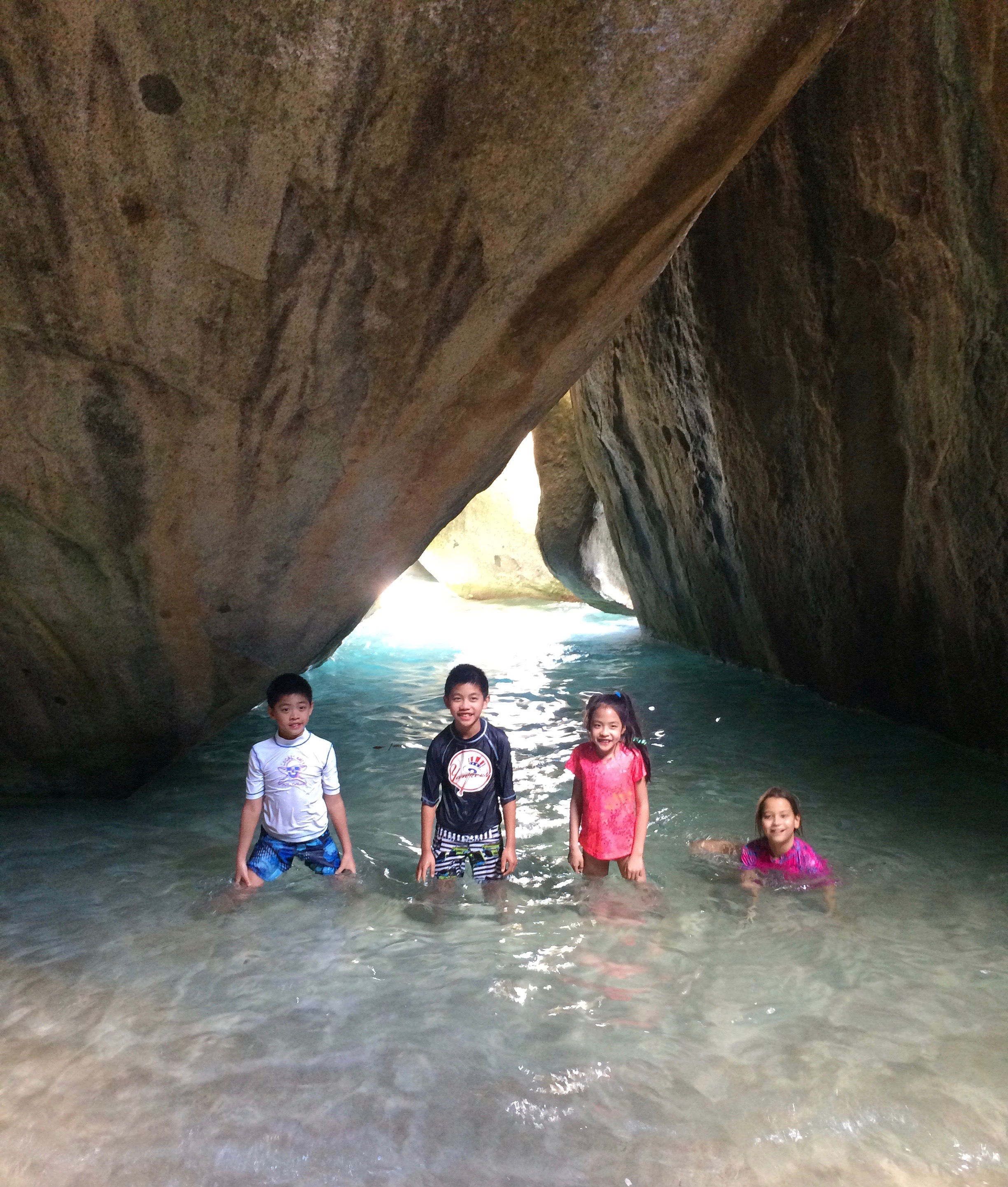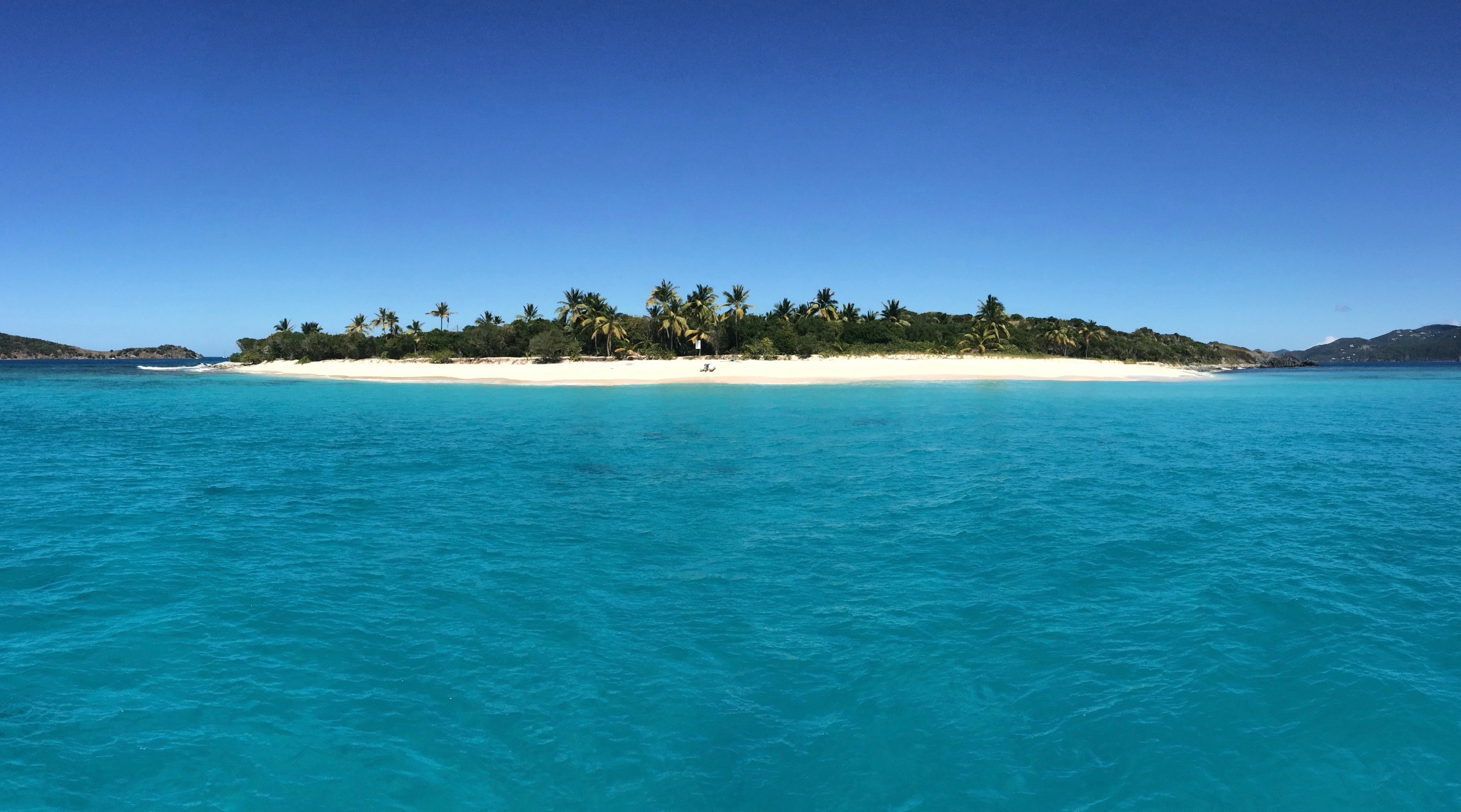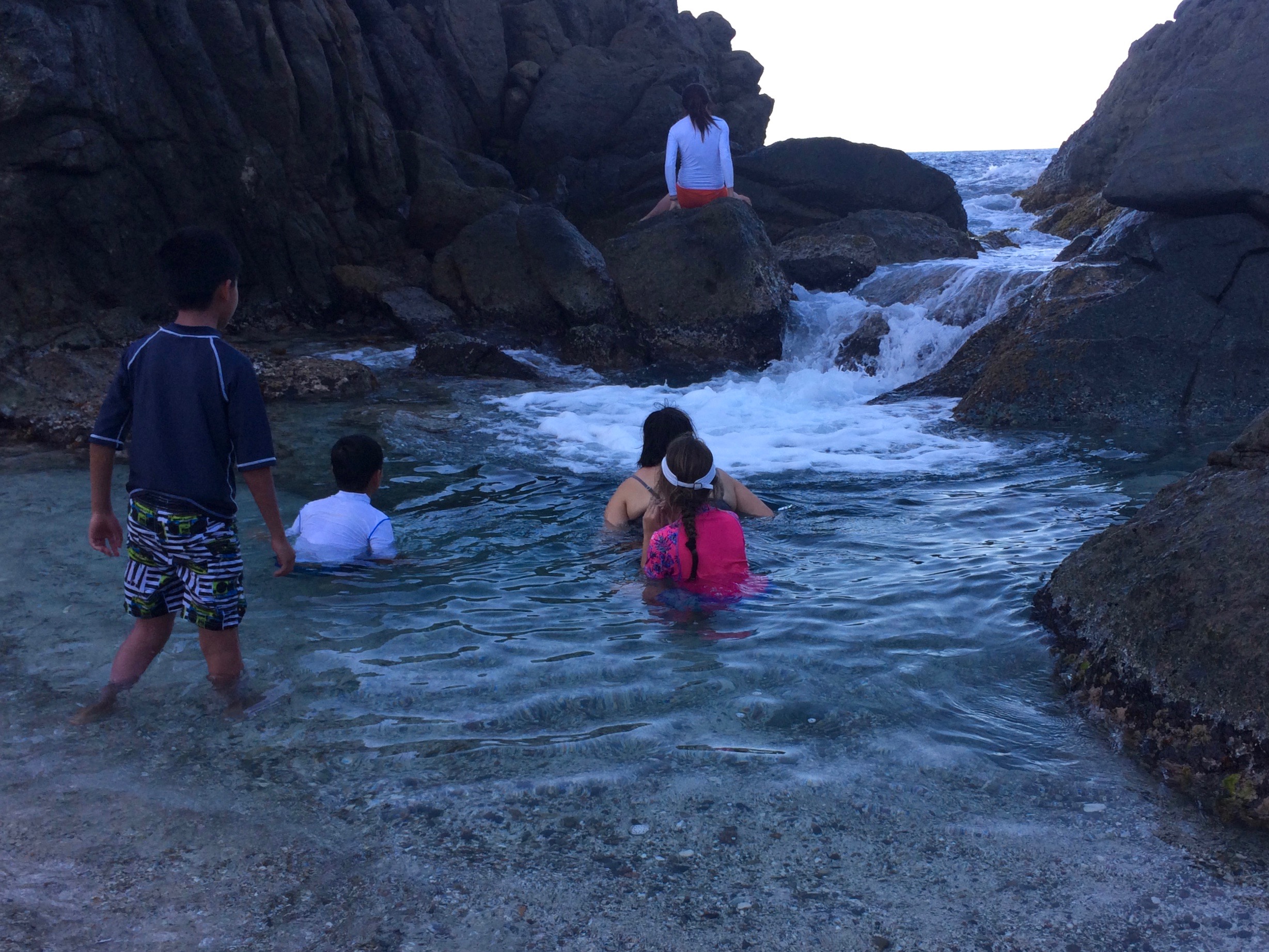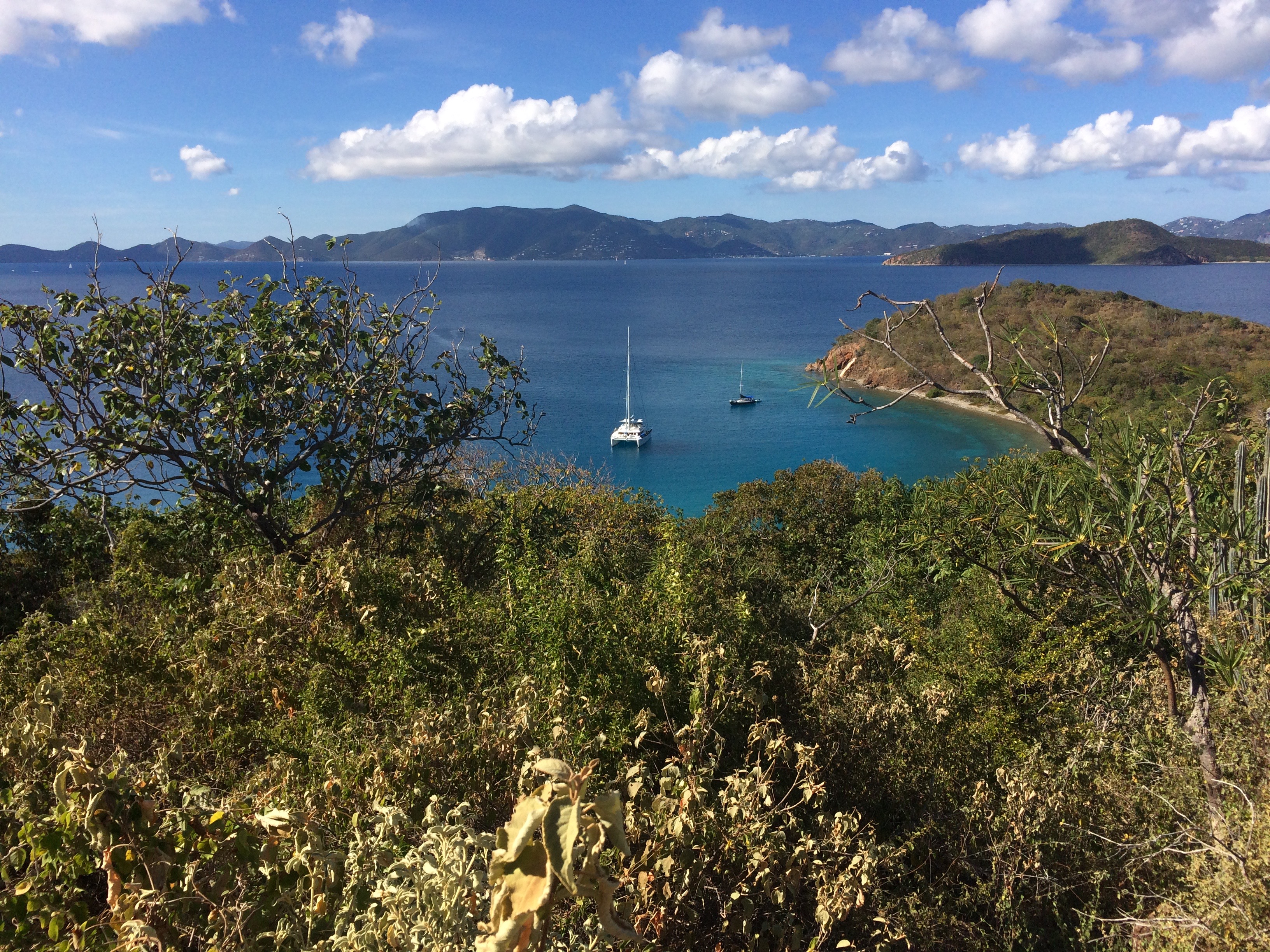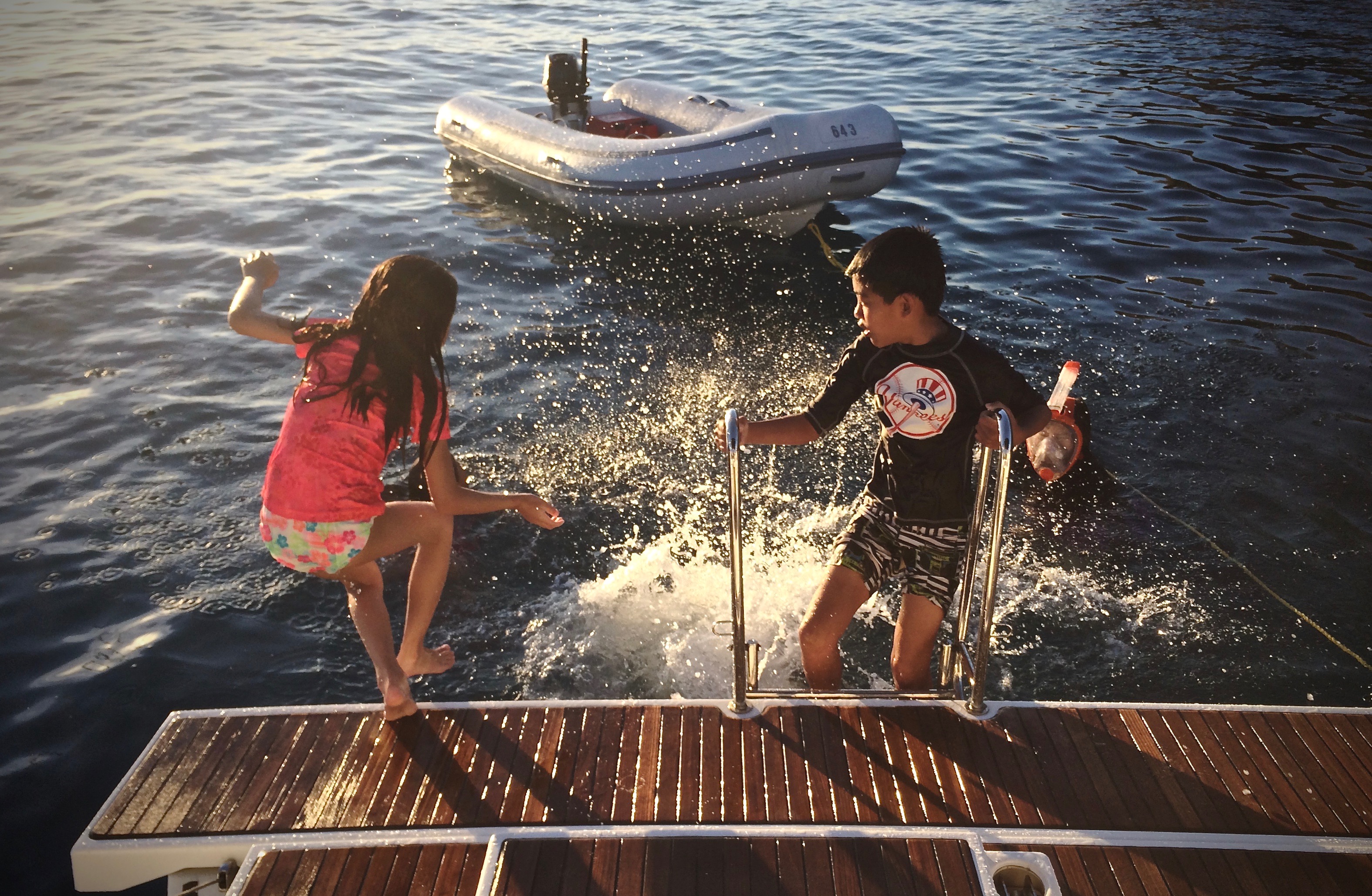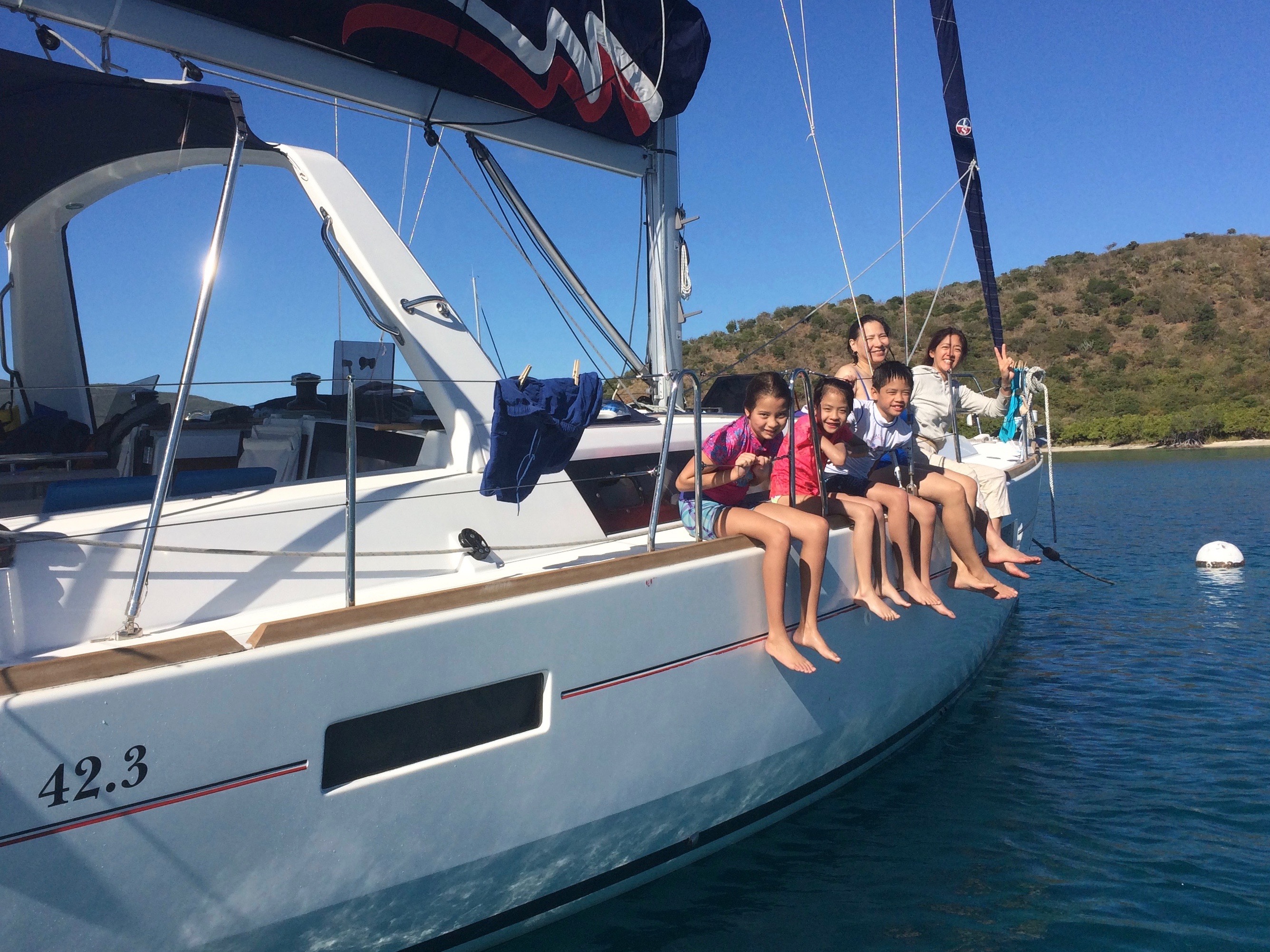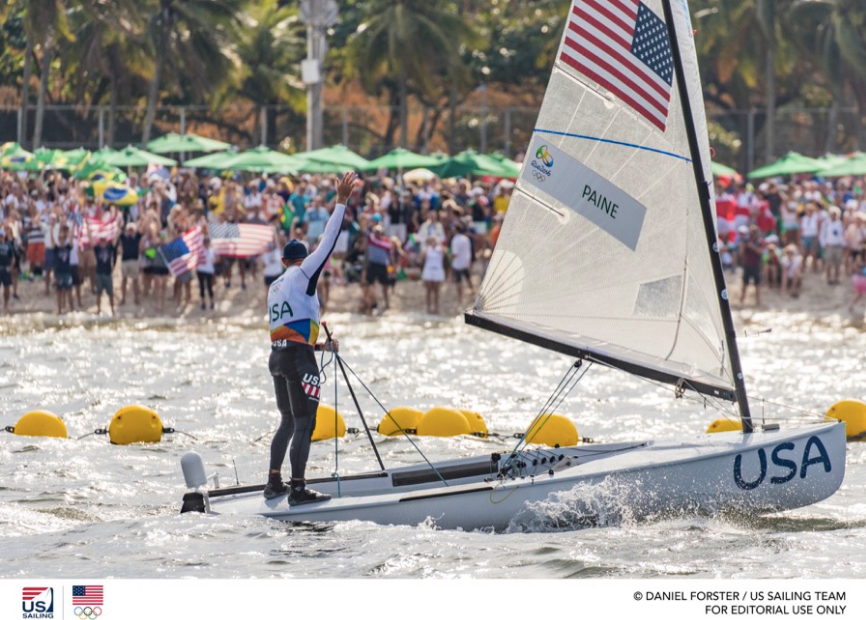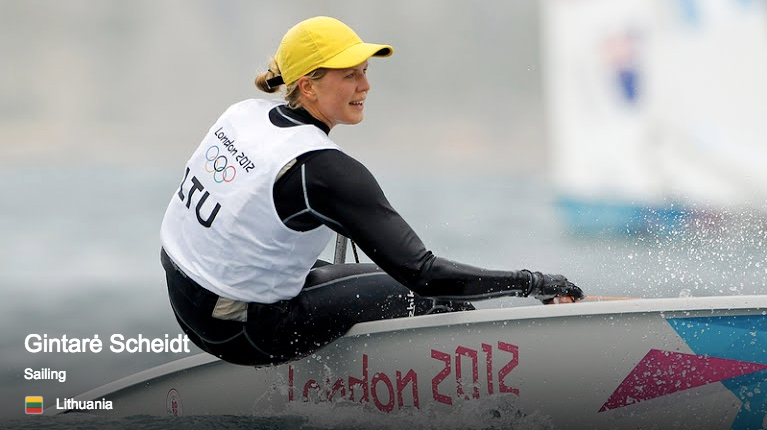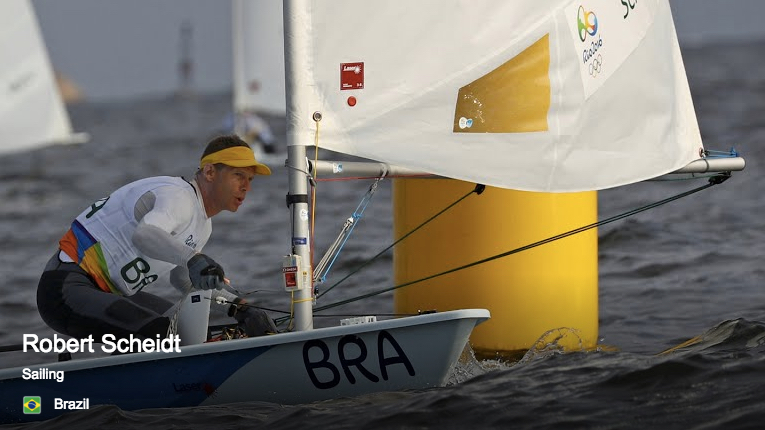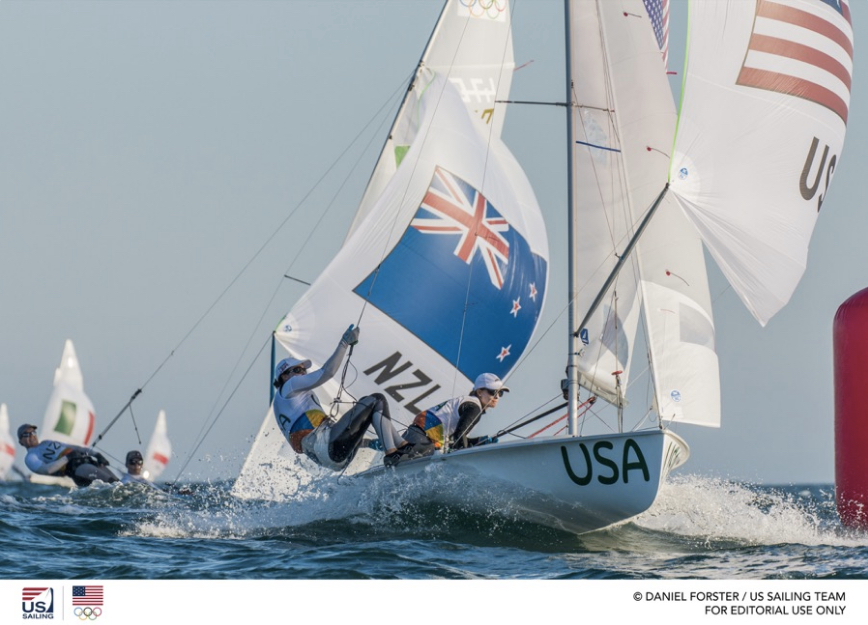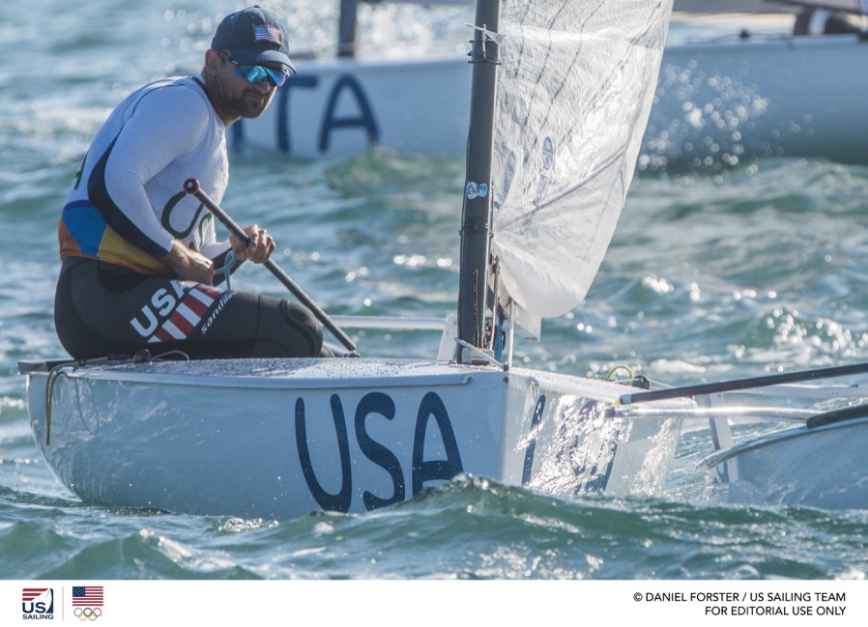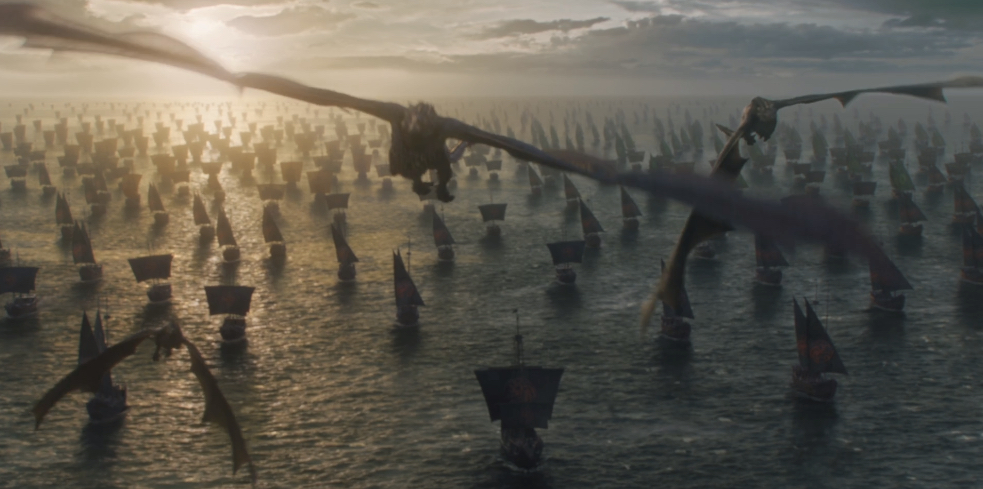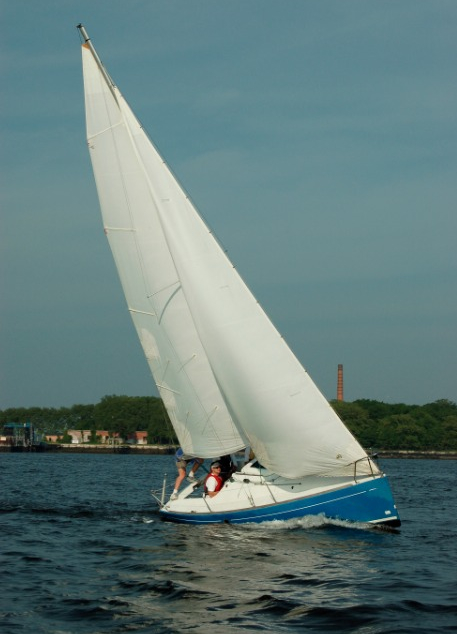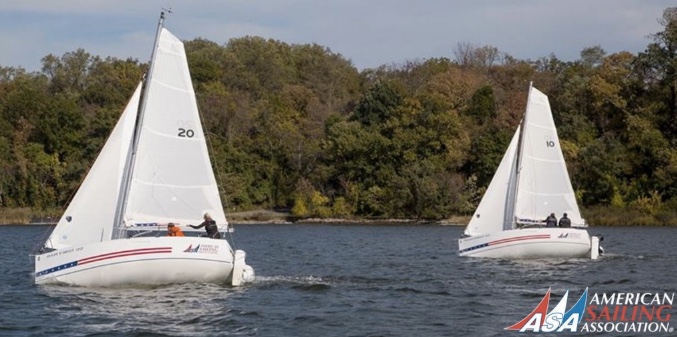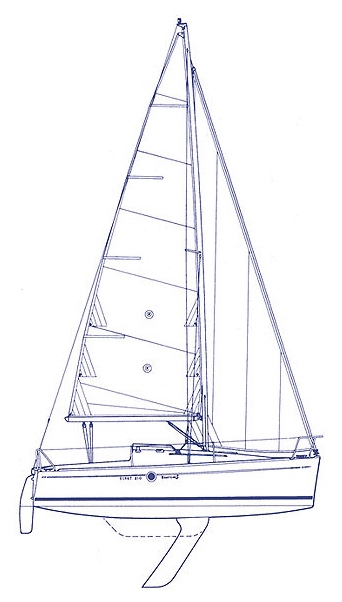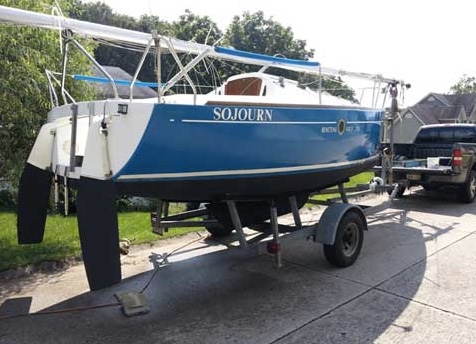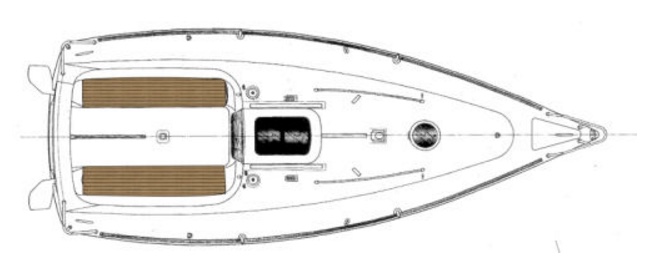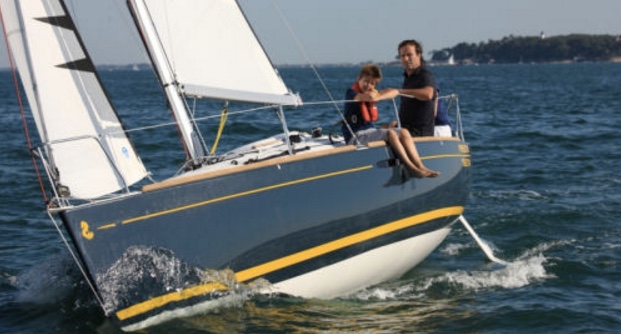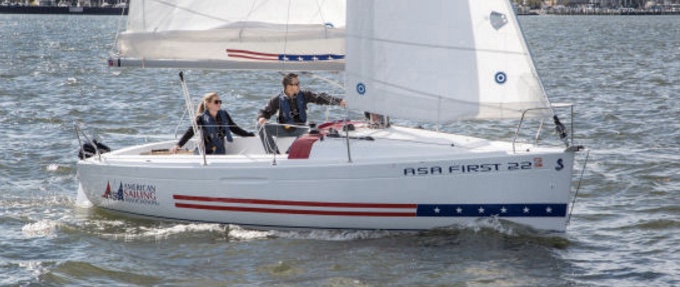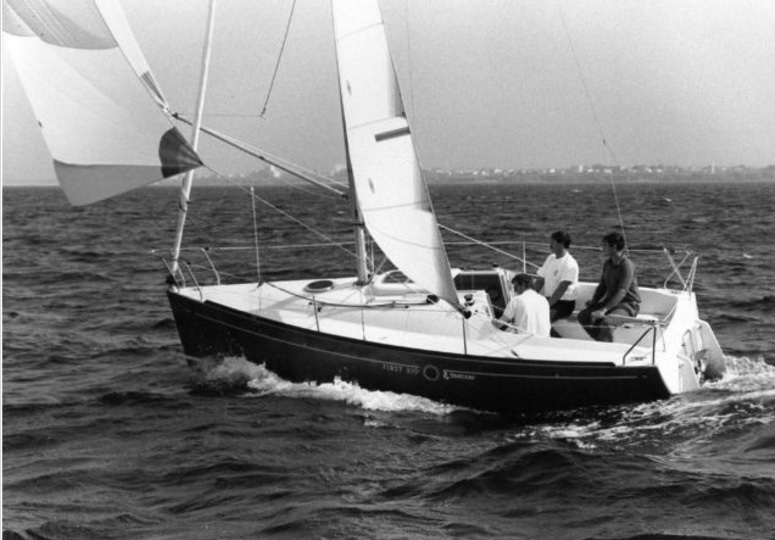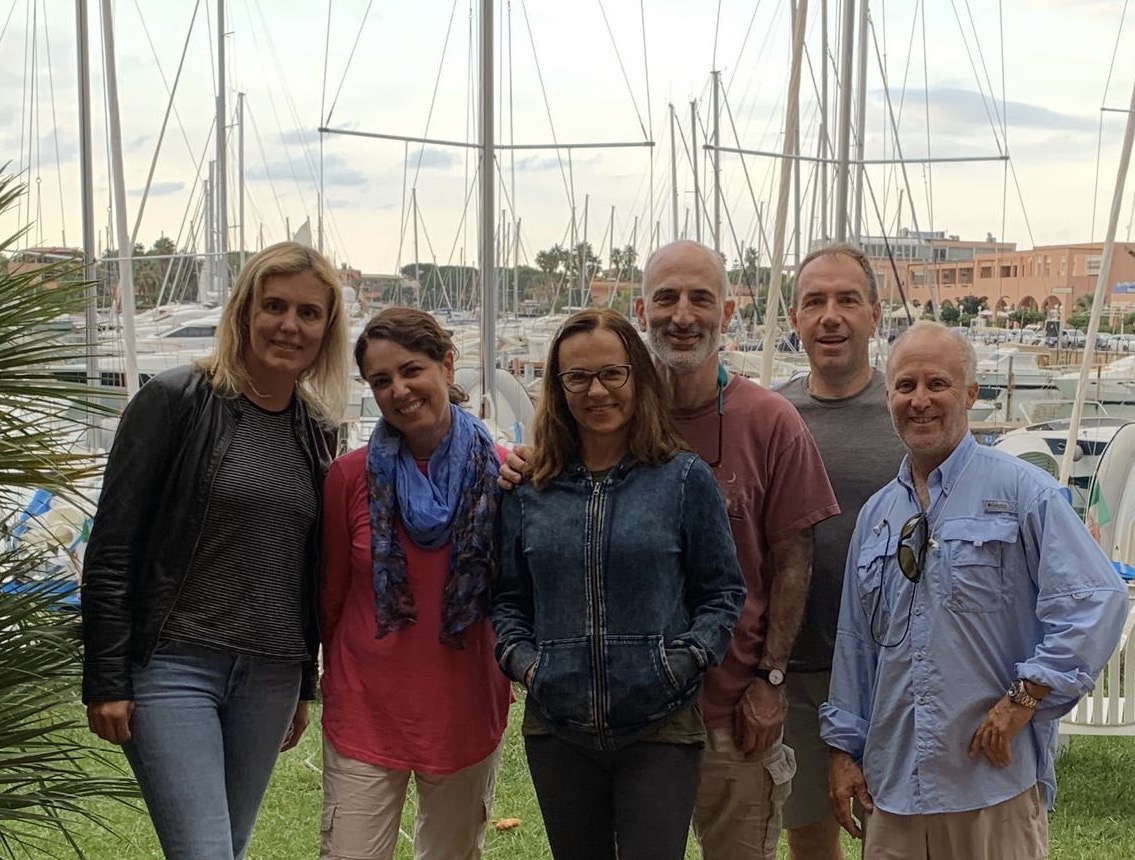
(all photos in this post, for better or for worse, with the exception of the above by a passerby at the base under supervision, by Captain Stephen Glenn Card.)
We recently got back from our second trip to Italy! We were all sad to see it end, but all had to get back to make mo money for the next trip…
Last time ? Islands off the Gulf of Naples, Pontine Islands, Amalfi Coast. Sweet trip; years ago.
This time?

The Isole Eolie off Sicily, which are a UNESCO World Heritage protected area. The waters were perhaps the clearest any of us had ever seen in our travels, and super saline to the point of us feeling like we just floated higher when swimming and snorkeling. The islands are a beautiful combo of rugged, volcanic majesty and plush, verdant beauty. Nice peeps, plates and ports of call.

We all arrived the afternoon in advance of departure at Portorosa to get settled and prepped. The “Sunsail” base here is operated jointly by Sail Italia, which operates some or all of Sunsail’s operations on a day to day basis in Italy, and Turistica Il (il) Gabbiano Yacht Charter. It was confusing at first, but the folks there were consistent and very nice to deal with.
We made sure there was a boat (check), got our boat briefing out of the way early, and waited on an area brief/skippers’ meeting. This got consolidated into too many boats in one briefing late in the day, but we all dealt with it and managed. Afterward, and again the next morning, there was time to ask more questions.
As we paid plenty for a near-new boat (less than 1 year old), there was almost nothing to address about its condition. One hinge for one vanity adjusted, and done! Only unresolved question was what to name the boat. Seriously. No name! So new, that… no name. So, off to the make believe land of GoT to come up with something. Plus, one that came up organically in convo with one of the Italian staff. That one? Solo Sicilia (Only in Italy). The one that stuck and was put down on paperwork in port after being used on the VHF?
“A Girl HAS No Name.”

Wonderful dinner ashore at a restaurant in the complex, with excellent local wine. One of our crew is somewhere between an connoisseur and a sommelier, so we never had to worry about wine choices.

DAY ONE: Coffee, breakfast in stages, and get ready to RUMBLE!
The first two or three days were forecast to be pretty calm, so we anticipated light and variable winds in the mornings that ought to become light but sailable midday or in the afternoon. (Nailed that.) Then, mid-week, we’d get a “storm” in their words. It was imperative to have a parking spot in one of the few sheltered marinas in the islands, and wise to not plan long legs during that time frame. Our imperative? Get to Stromboli and knock that out, so to speak, before getting mid-chain and hedging / assessing next steps.
So, to jump start things, we planned to bypass the first island, Vulcano, and stop at Lipari instead as a first step toward Stromboli for night two. We reserved a berth at Lipari and a mooring at Stromboli toward that end. Lipari is the largest of the Eolie, and has a protected port and plenty of sights to see while parked there.
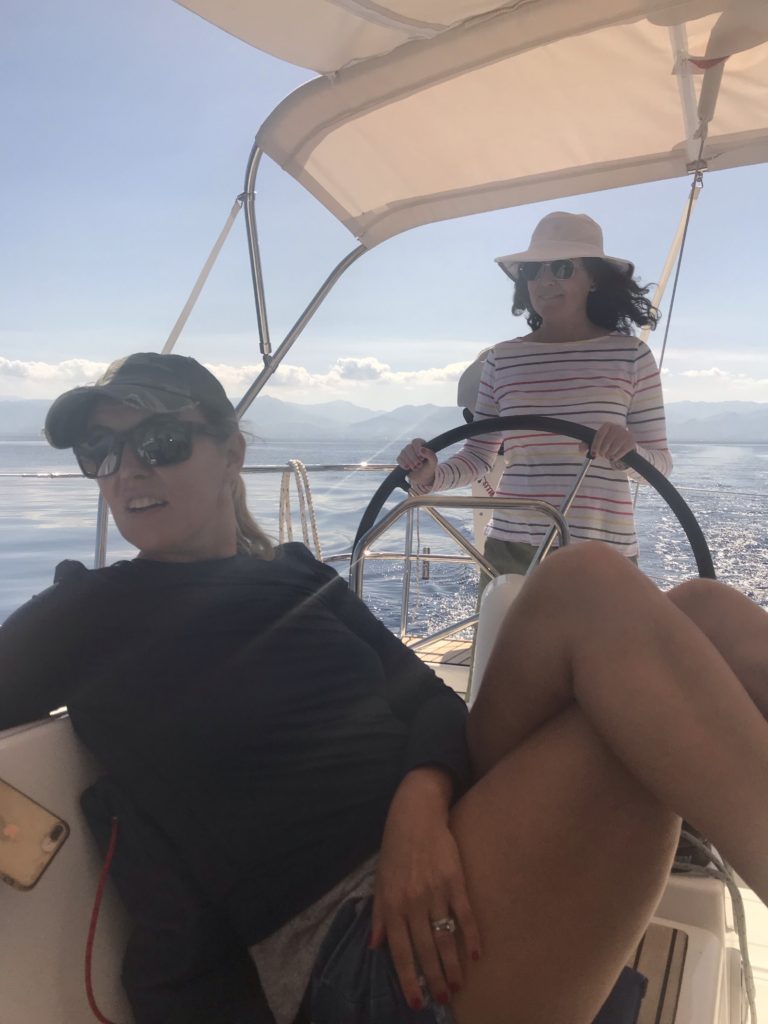
As predicted, the wind was light and variable as we left port, and for most of the way to Lipari. We motored the whole way. Some boats tried to sail but were standing up straight and stubbornly sailing for the sake of sailing … slowly. Very slowly. We wanted to get in the vicinity of Lipari and then maybe do a pleasure sail once there rather than a delayed delivery. That worked. The wind came up enough to be meaningful and, with Stromboli smoking in the background, we did a fun shakedown sail for awhile before radioing in to the marina for final instructions.

Lipari’s chief parking spot is Porto Pignataro. It’s well protected from most directions, but it’s a bit tight inside and can require confident maneuvering in close quarters. The wind had picked up a bit, but it was off the dock so easy to back up and Med moor in our assigned spot – especially as the marina had a man on on hand to pass us the laid line (mooring line that makes using an anchor unnecessary).
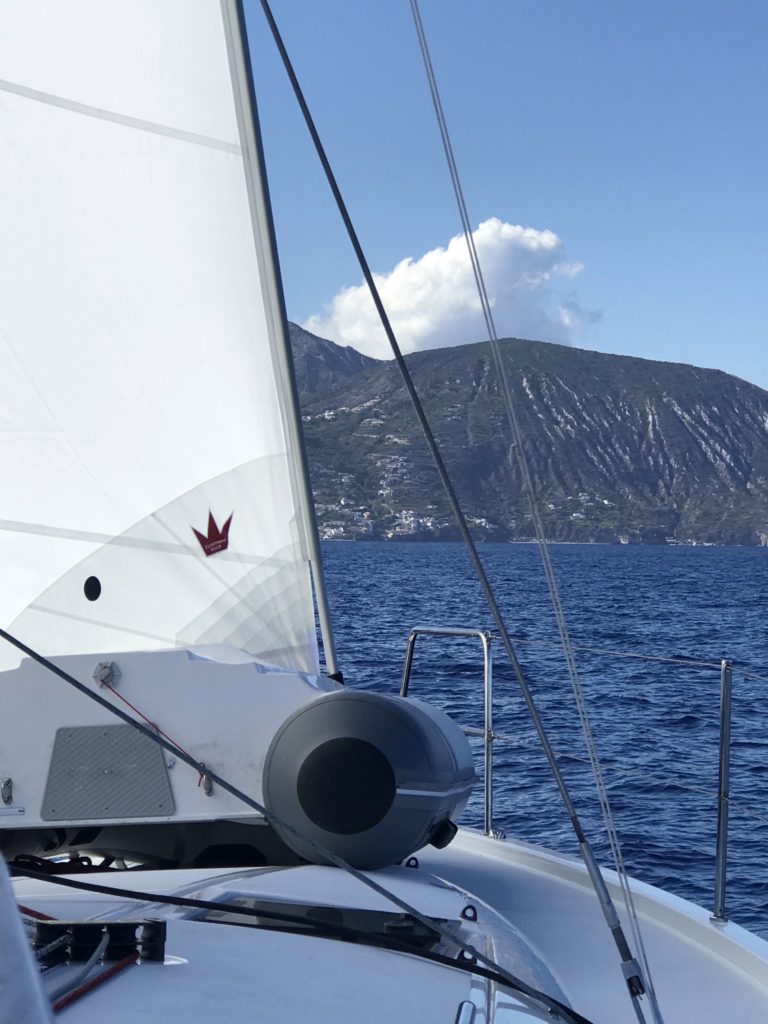
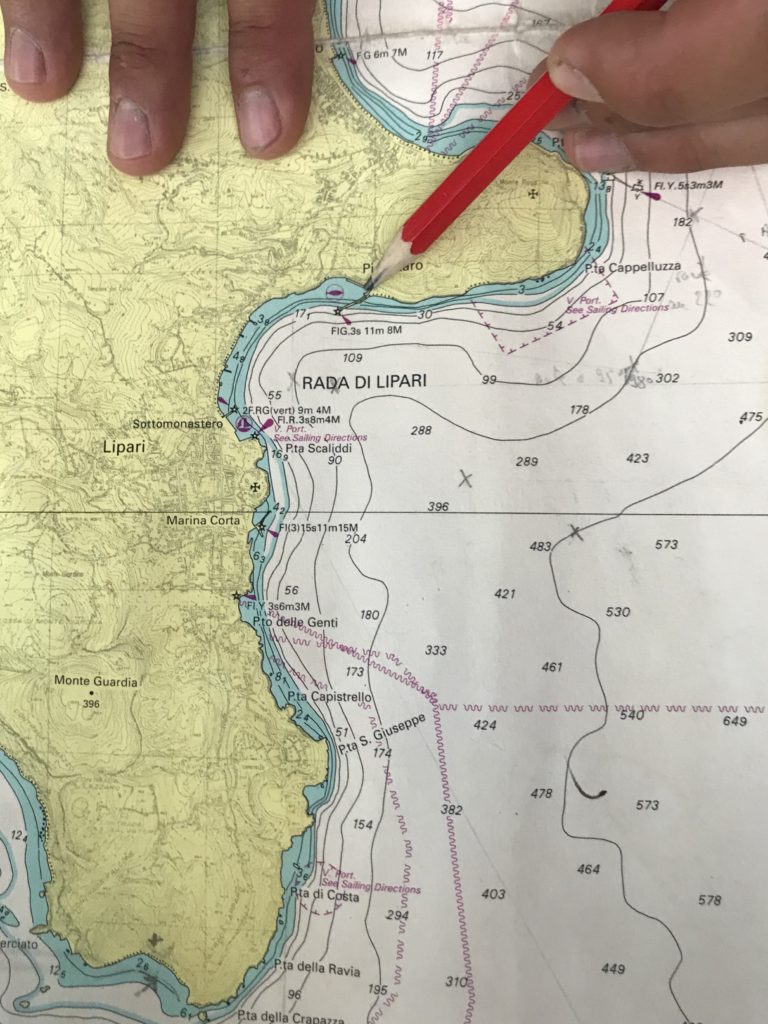
We wanted to explore ASAP, so after plugging into shore power and adjusting stern lines, off we went with yacht paperwork and passport to check in at the marina office before wandering into town. Once on foot we happened upon a friendly, professional looking driver with a Mercedes taxi-van, Danielle, who proposed a tour of the Island for a set fee after we asked for a ride into town. Sounded like a fair deal and a great way to explore efficiently, and we took it. Highly recommend this: it’s a large island and there are great vistas available if you roam around this way. Plus, Danielle was free flowing with factoids and perspective about the island and the area. We stopped several times, including an opportunity to just walk around the main pedestrian thoroughfare for a spell before moving on. This part was slightly rushed, but still worth it. Personally, I roamed up in between buildings and got a tour not unlike Old Town, Dubrovnik’s walled city. A few scenic stops later, we’d gone around the Island.

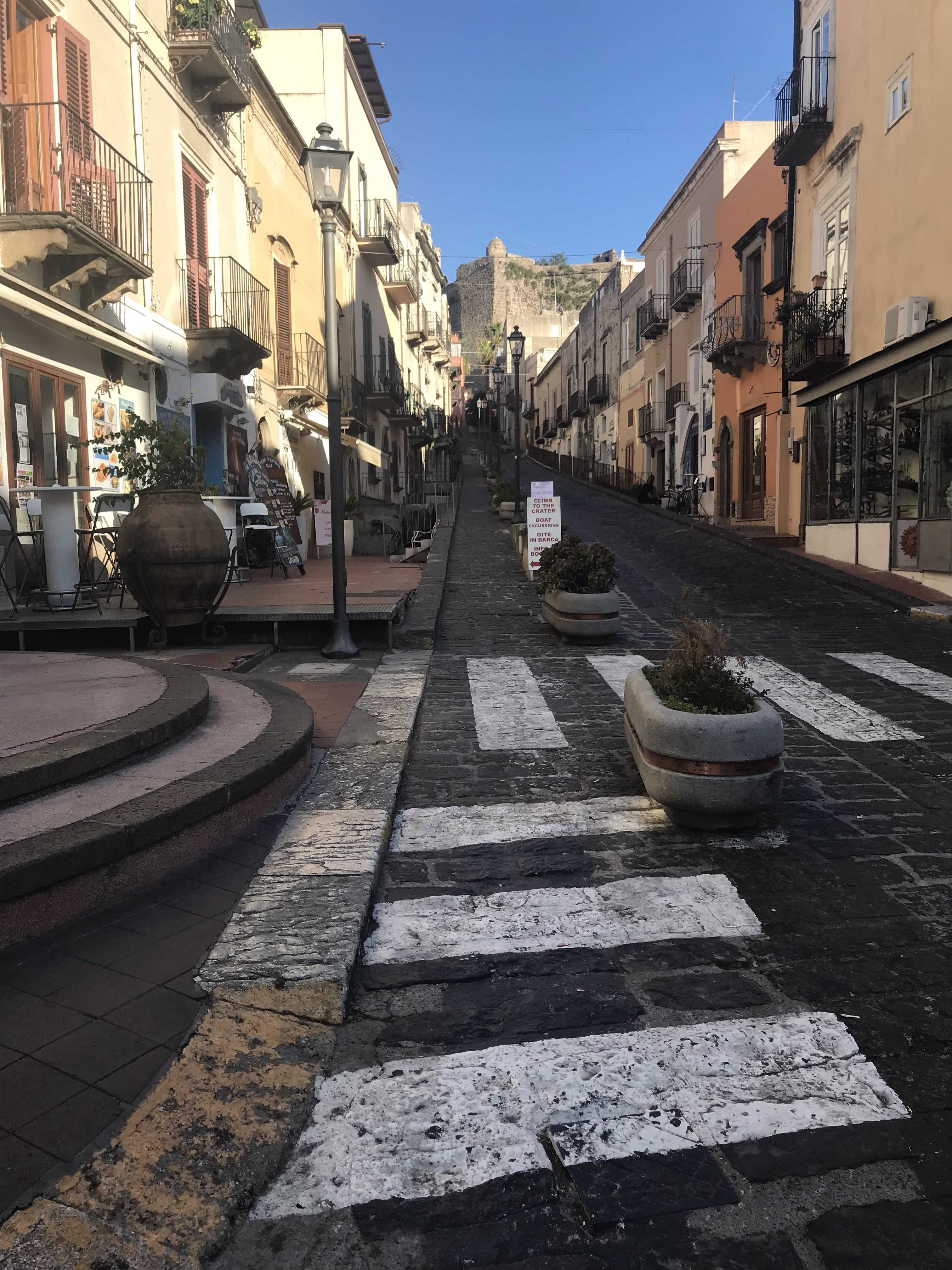
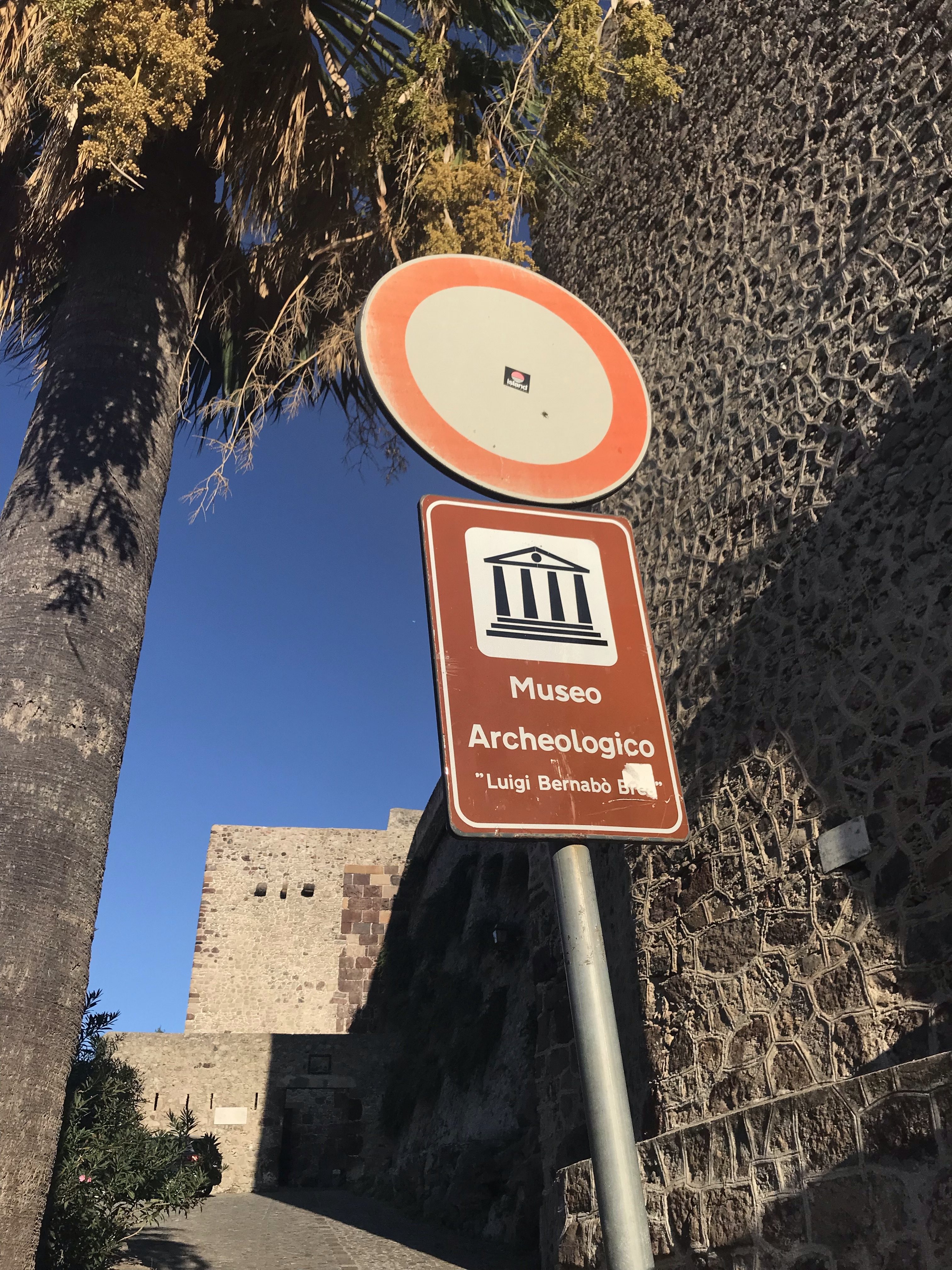
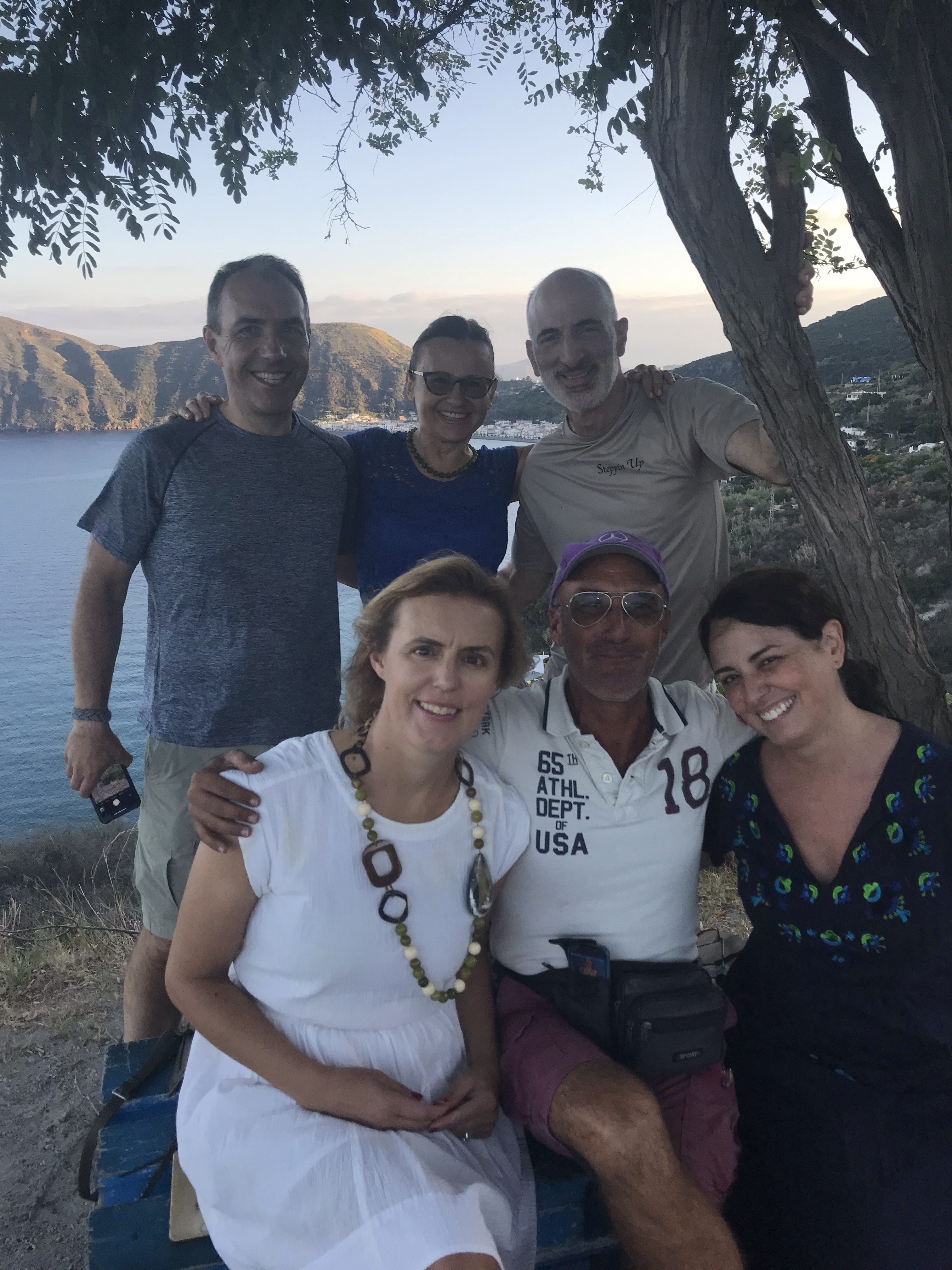
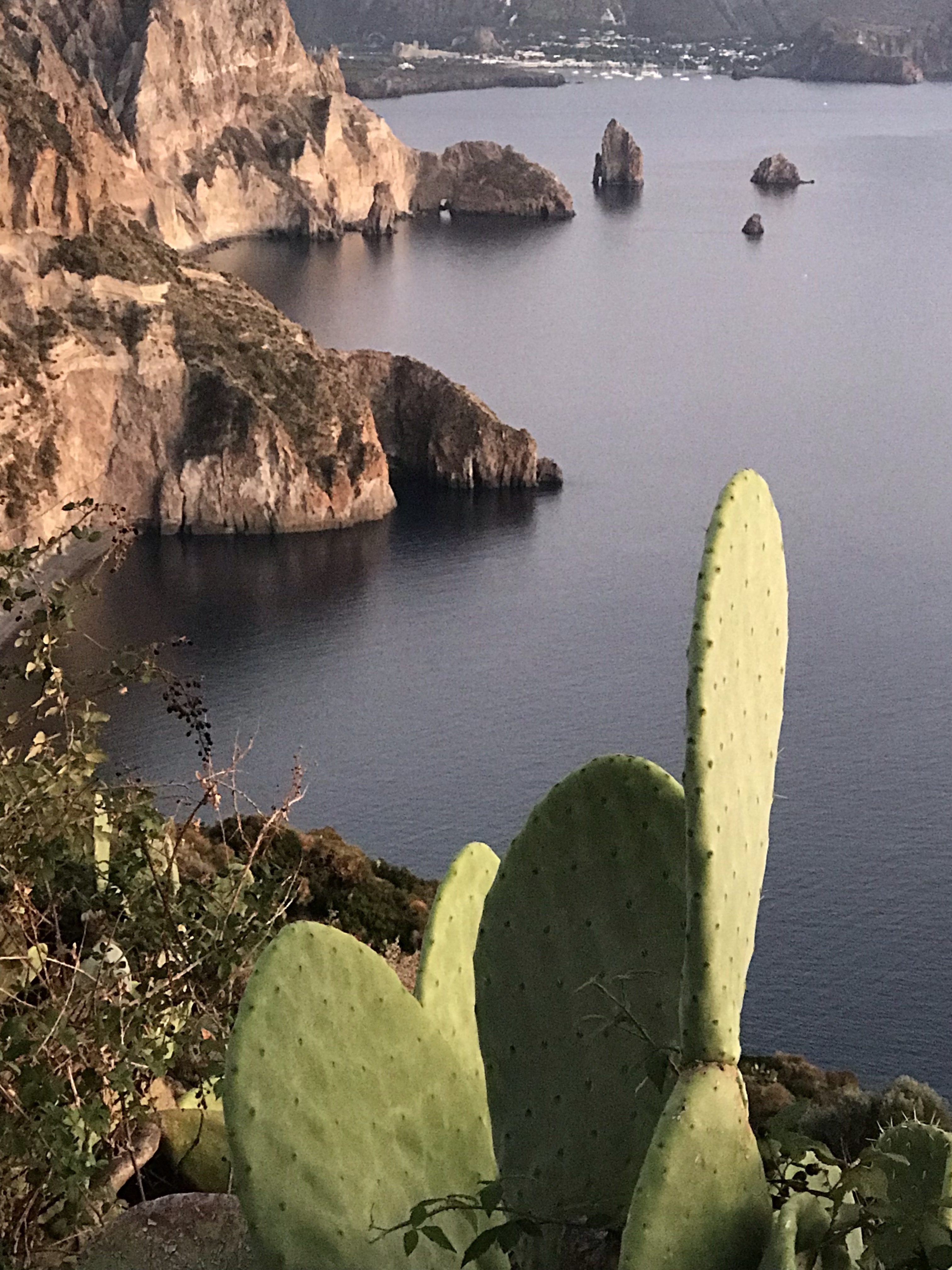

Dinners? To be done dockside… or more likely, a little further away. So, we took Danielle’s suggestion and went to a place up on a hill just outside town called Filipino’s. It looked like an expensive tourist trap, but it wasn’t. Everything was reasonable; fresh fish by the gram was a bit pricey but not outrageous, and it was fresh and well prepared.
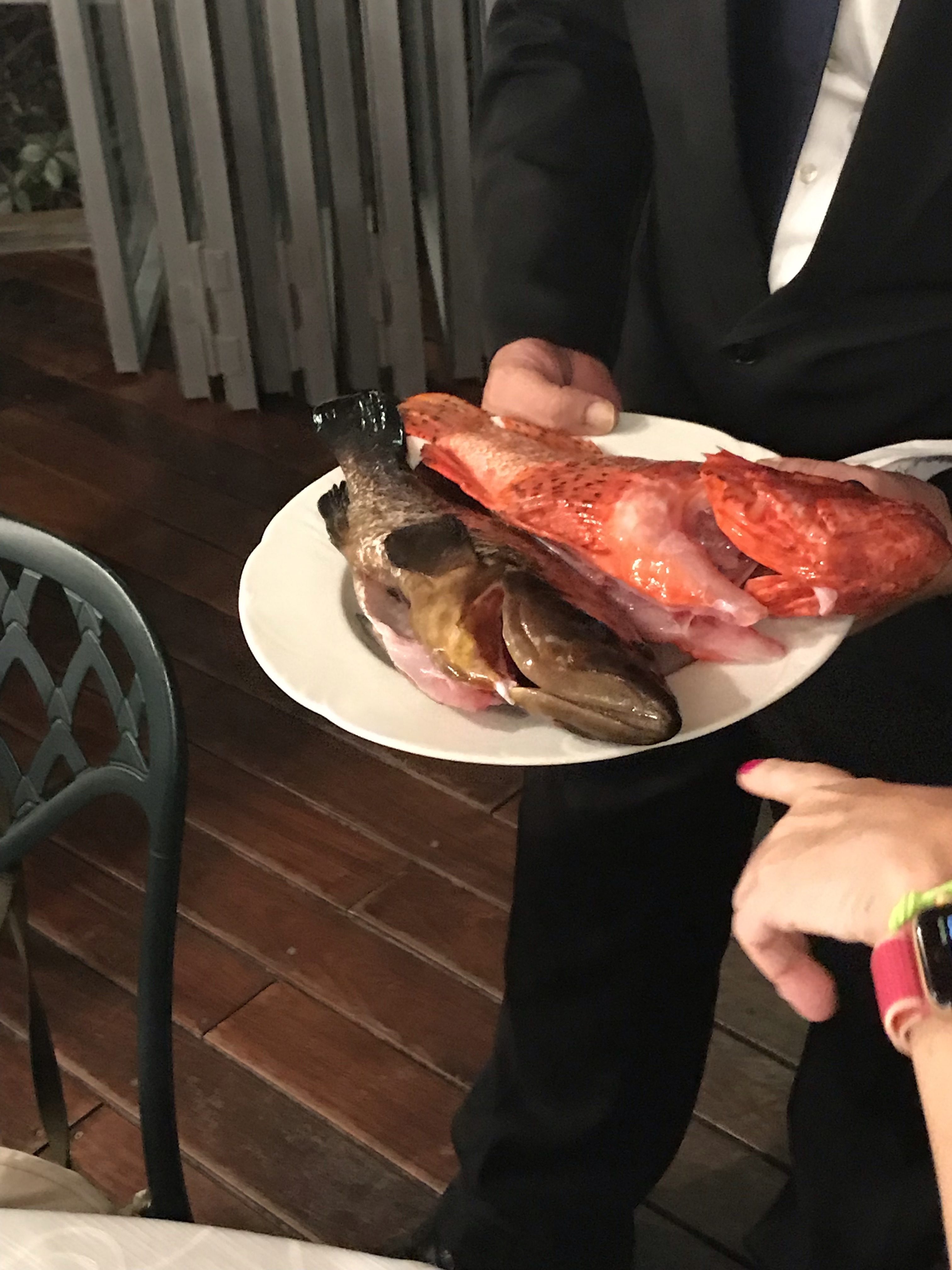

DAY TWO: TO STROMBOLI
With a stop along the way to snorkel, of course! We hit the smaller islands off Panarea on the way. There’s a spot where gas is escaping from the seabed to the surface, and it’s super kewl to snorkel through the streams of bubbles. We found the suggested anchoring spot (very fussy and small area; highly weather dependent to do). Then, we found the bubble area, which is not visible easily from the surface if at all.
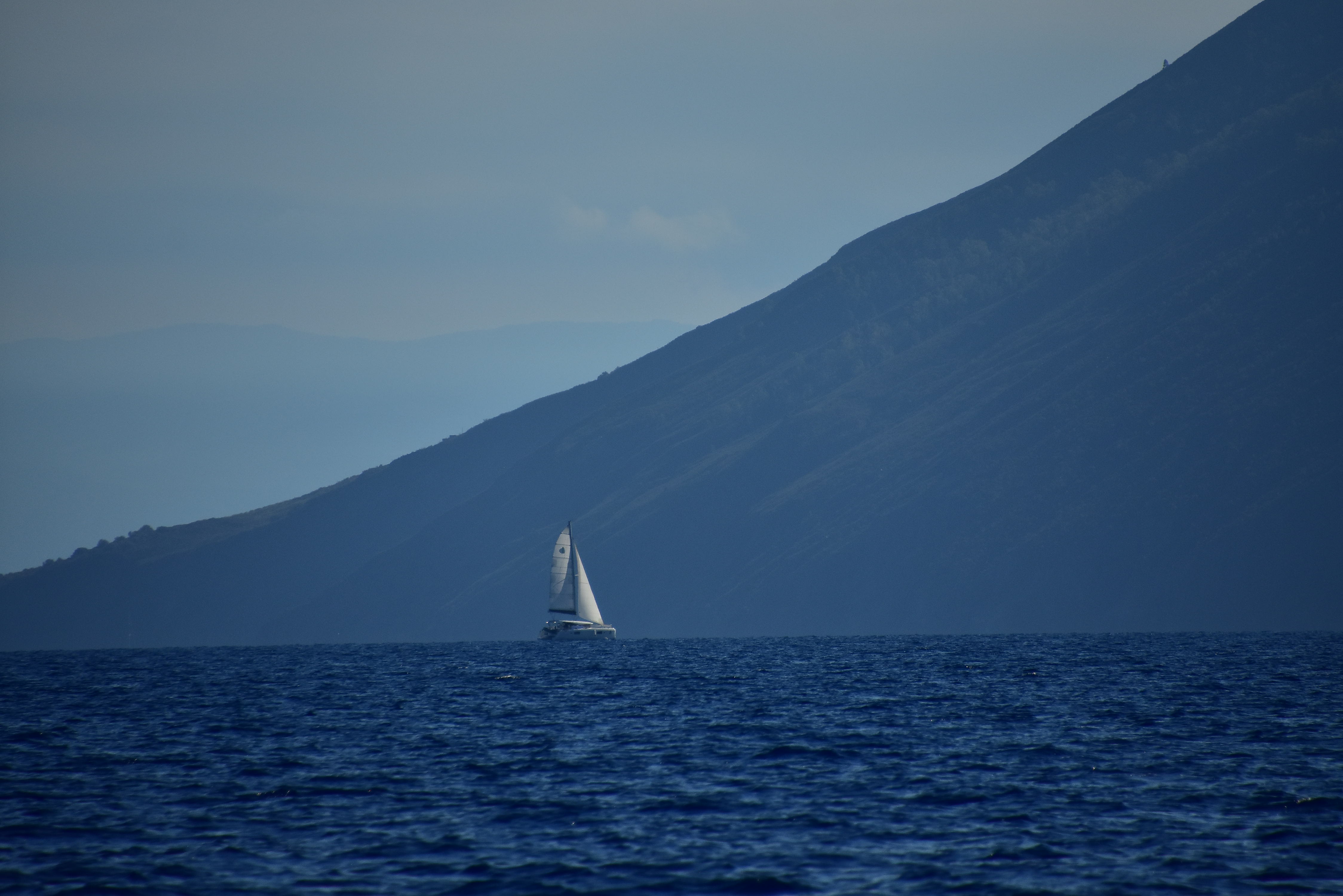
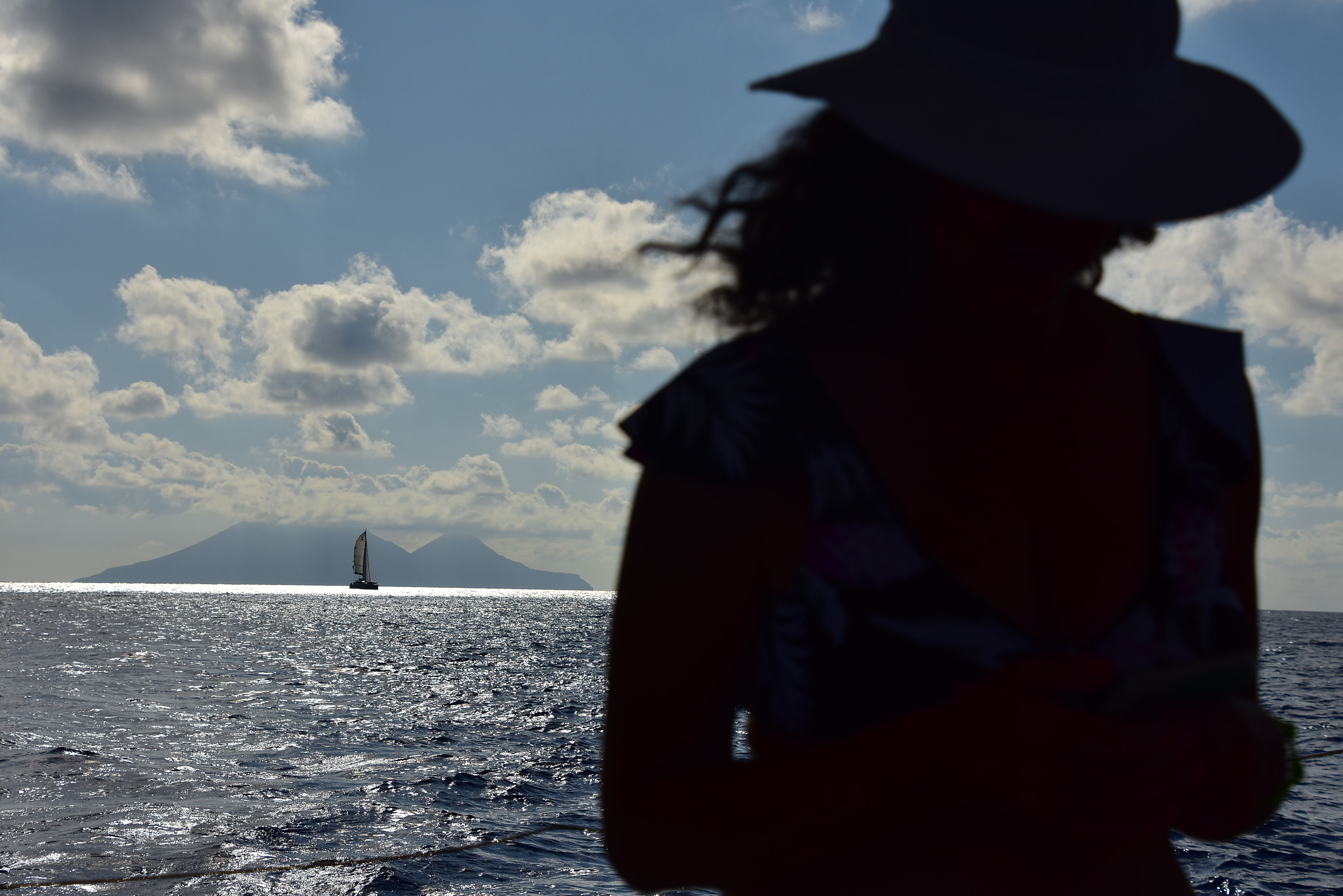
That, plus some bites, and we were off to Stromboli. We chose to motor to the snorkel spot to save time as, again, there was little wind. But we sailed all the way to Stromboli from there. How majestic and beautiful.

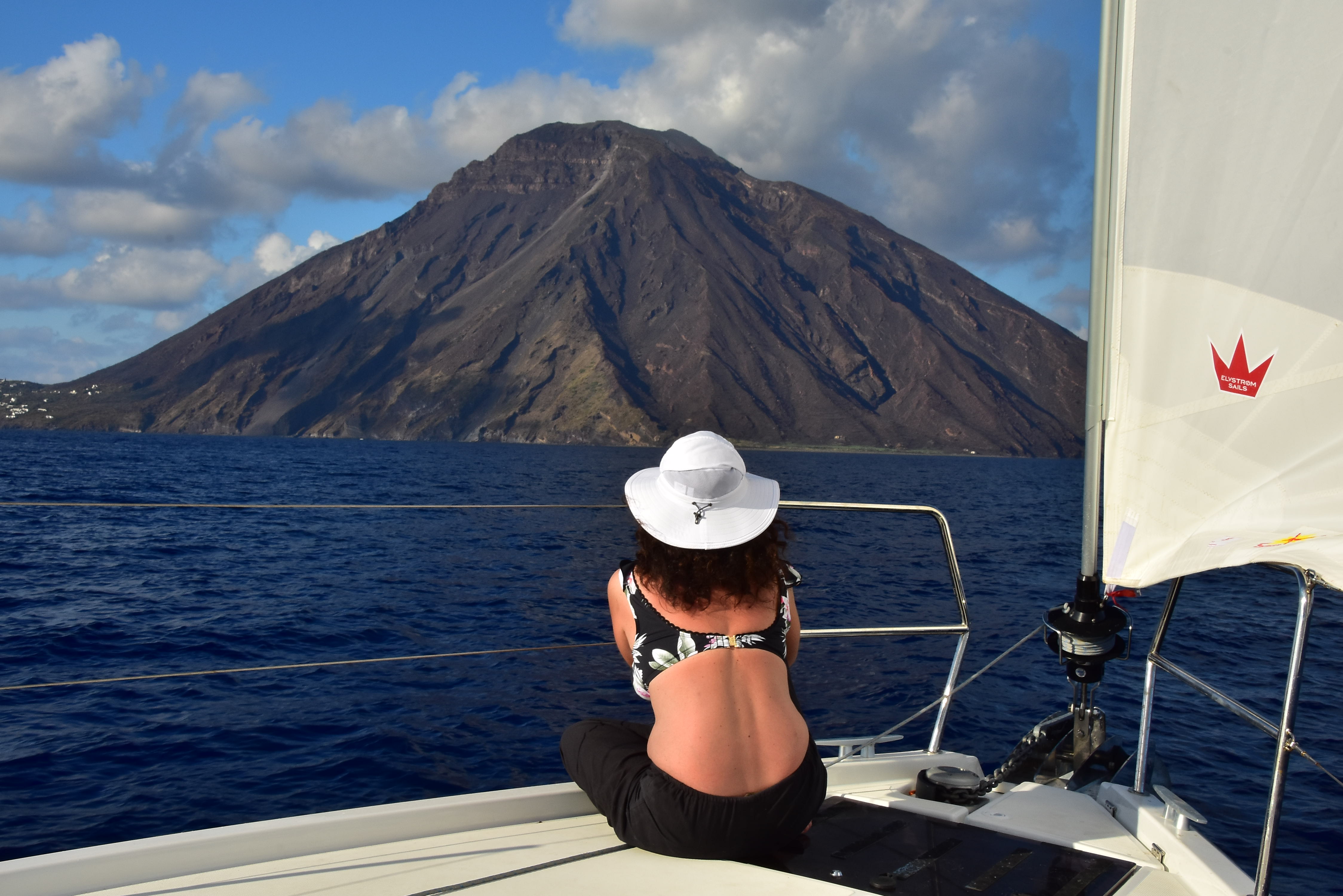
Stromboli is a constantly active volcano with two small toe-holds of civilization. There’s a mooring field with some room to free anchor off the northeast shore, where the larger village is (and were the ferries zoom in and out creating wakes except during the night).

One must plan carefully and visit here only when the weather is favorable as it’s exposed from three cardinal directions. Totally worth it: stunning to see up close and personal.
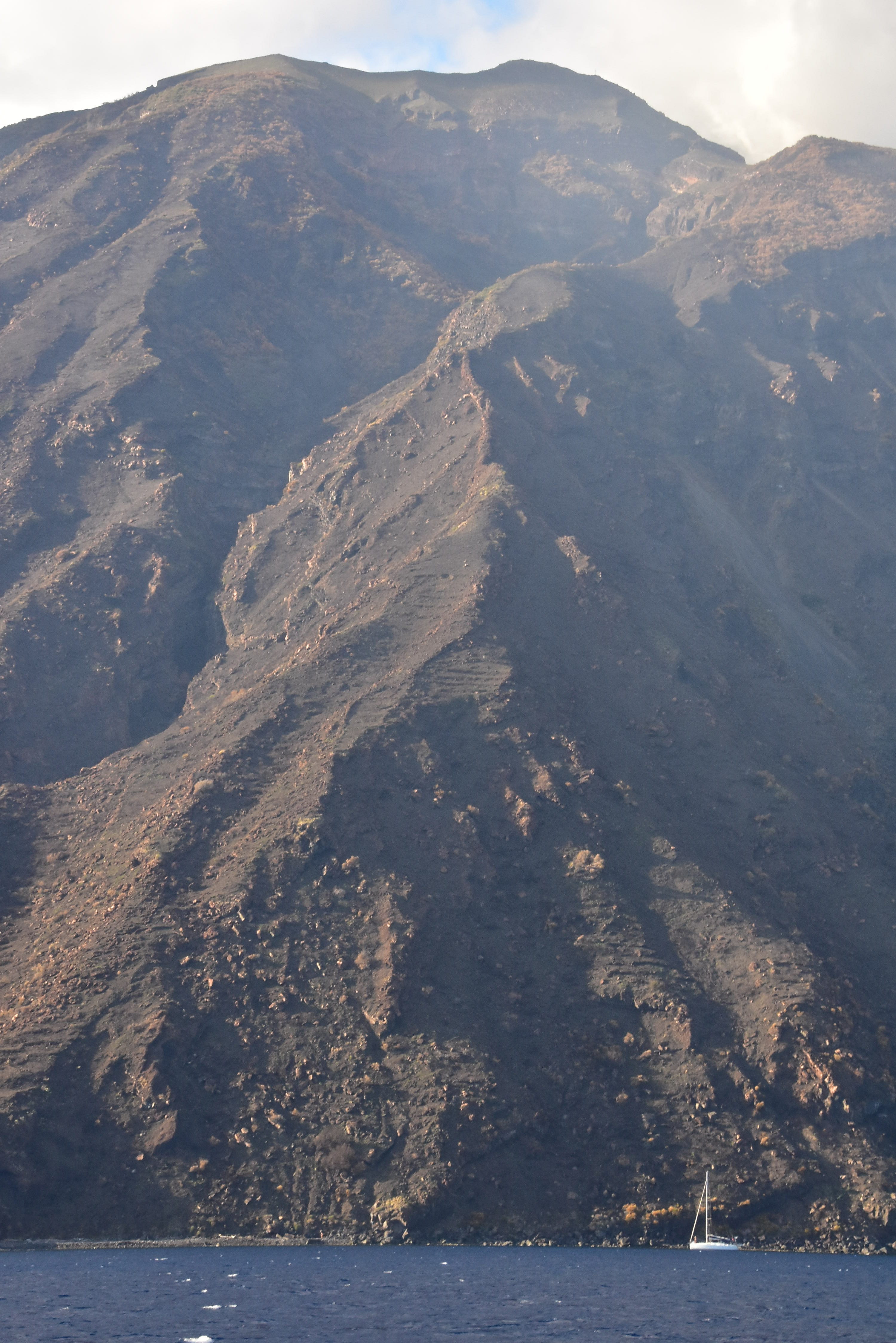
Our resident Italiana spoke to the locals and scoped out a sweet spot for dinner, which took some exploring to find. It was worth it. Trattoria ai Gechi. (Think GEICO gecko with his mouth shut while folks eat.)

That’s a wrap for this installment; we’ll do another one or two to share the rest of this trip with you! Ce vediamo, eh?
